By contrast, the visiting Irish-American tourists have short memories. They have histories just as dramatic, ancestors every bit as traumatized, as the Irish who never left, yet their families long ago let go, in that American way. Bitterness, arriving in the huge, new land, was able to spread out, spread thin, until its atoms had so much space between them it could not be seen or felt. The newcomers joined the other immigrants in the collective amnesia of becoming American. The Irish in Ireland stayed behind, with all their memories. They work now to decide what to keep, what to let go. Frank doesn’t seem like someone who would let a grudge against bog oak bog him down, but he also doesn’t seem as if he’d have much interest in bogwood jewelry. He has too much on his mind in the present to worry about the past, though it would be a mistake to think he’s necessarily typical.
Were the Celtic Tiger houses, those outsized, flashy, brand new pomposities—those modern-day follies—an attempt to forget?
Ballyfin is a grand Irish country mansion, up to its Georgian cornices in first-class follies—an outstanding tower, an outrageous grotto, a pristine, small Greek temple made of blond marble. The house was falling apart when its new owner bought it in 2002, with the intent of turning it into a unique, small hotel. He spent nine years restoring it, from the impossibly delicate flowers and tendrils of the plasterwork across its ceilings, to the 2000-year-old Roman mosaic floor that fills its entry hall, to the soaring wrought-iron-and-glass conservatory that was dismantled, sent to England for restoration, returned two years later, reassembled. How much it cost no one will say, but the fact that they constructed a tunnel connecting the house to a distant corner of the property, so that guests would never see staff arriving or delivery vans pulling up, says a lot about the owner’s attitude toward the budget.
The follies, too, were restored. The folly tower is one of the best anywhere, complete with moat, a twisting staircase that stops at four different landings each with its own little fireplace, and at the top, a glass-enclosed observation deck with sweeping views of the house, the walled gardens, the lake, the distant hills. The grotto, too, was made safe again for frolickers, who can duck in and out through its elaborate rustic portico—think of an impressive porch with columns, if Fred Flintstone were the architect—or they can slip out the back way down the curving tunnel to the secret rear entrance. James Howley, in his definitive The Follies and Garden Buildings of Ireland, declares it “the finest of all Irish grottoes.”
But Ballyfin, for me, was about something else. I was there at a dinner for some writers. I don’t remember much about the piece of fish they served me except that it was perfect, but I do remember Eileen, the woman who sat next to me. She lives in New York, in Queens, but grew up in a small town in County Waterford, near an Irish-speaking area although her own Irish from school, she says, is shaky. She claims to understand it better than she can speak it. Still, when her sister visits they speak Irish on the subway to make fun of, and baffle, the people around them. I’d say she was around forty, based on the fact she’s been in New York for twenty years, but she looks younger. She has fine dark hair she wears up in a clip, and Irish skin—the faintest bloom to it, like a capful of fabric softener in a washtub of water. She’s a jeans-and-pearls-and-strappy-high-heeled-sandals kind of girl; she’s fun and funny and has her Irish-birthright share of quick, dry wit. She was a little subdued at this dinner, under the huge chandelier and high, gold-gilt ceiling. The immense mirror over the fireplace reflected the chandelier’s glow, the china and silver and crystal were all a-twinkle, the light was flattering and we all looked good. The topic of conversation at the table, as is inevitable at Ballyfin, was Ballyfin itself, because it is such an extraordinary restoration, the ultimate restoration, absolute museum quality down to the last detail. So we were talking about it—isn’t it astonishing? isn’t it beautiful?—and what I remember most is what Eileen said. She turned and directed it to me, but anyone at the table could have heard. She said, softly, looking amazed and sober at the same time, her words carefully considered yet full of surprise: “Isn’t it wonderful that we’re at a point, now, that we can enjoy this place as art?”
Epiphany crackled through my head like lightning. The sudden grasping of something huge that I’d had not even a clue was out there in need of grasping. Her “we” was the Irish, and she was talking about her discovery that she could admire Ballyfin on its own terms, enjoy it “as art” as she put it, and not have to see it through the lens of Irish oppression. There was wonder in her voice. She was as surprised as I was, for her own reasons.
And I sat there, just another silly American in Ireland. Strolling around Ballyfin house—the silk wallpapers! the marble columns! the chandelier that belonged to Napoleon’s sister! the indescribably gigantic antler rack of the extinct Irish elk!—I had been enthralled, nothing more or less. It was a shockingly beautiful house, and that’s all it was to me. I’m an American. I’m impressed by beautiful houses.
Eileen’s words let me peek through the peephole into that other world in which Irish people live, and of which we the children of the Irish diaspora are so ignorant. In the abstract, we may get it—the history, the legacy, the baggage—but the raw wounds inside Irish people, the visceral thing, that’s not a matter of knowledge or understanding but of feeling.
There are many varieties of forgetting. The human urge to forget is as natural as the need to remember. Like many human urges, it can be healthy or unhealthy. There is the sort of letting go that Eileen, and Frank, are committed to. There is the forgetting of Irish immigrants in America, born of necessity. My own father, snug and oblivious in his mother’s womb as she fled her village in Ireland for a new life, was a reminder to her of what she was trying to leave behind. When she gave him over to the orphanage, he was by then the baby she could not forget after all; he would grow up knowing her, visiting her, spending time with the family she went on to make, playing with her other sons, without ever knowing who she was, who they were, putting the puzzle together only when he reached adulthood.
And there is forgetting as practiced by the Irish aristocrats of old, who had an approach all their own. They were determined to forget—negate—the actual state of things around them: hunger, inequity, a social order that was doomed. They did this by building whimsical, escapist follies, “foolish monuments to greatness and great monuments to foolishness” as the writer Stuart Barton called them. These are strewn all over the countryside, many of them now crumbling—fake ruins falling to ruin—so that the Irish people are stuck figuring out what to do with them. If the Irish chose to let them decay and fade away, who could blame them, except that the follies are a part of their heritage, their history, too. There is an art to letting go, and holding on, at the same time.
Follies are disturbing, follies make me uncomfortable. Sometimes I feel that all the fun has been sucked out of them. But isn’t there something to celebrate there—their glorious uselessness? They make a statement: there is value in flights of fancy; the act of creation doesn’t have to be about utility, or even art—sometimes it can just let you scratch the itch of silliness. It’s true there’s some difficult history connected to follies, but just like embracing your beyond-distant cousin in Boston or Ballynahinch, you can see what you want to see. Follies are fun, damn it. I’ve seen it with my own eyes—Frank’s face lighting up, his first time, when he got it.
Back in the car with Frank, late afternoon, we are kind of giddy by now with folly-hunting but we’ve got to find one more, just one more. We’re looking for the Bottle Tower, but it’s a lot like the Wonderful Barn which we’ve already seen—crazy cone-shaped thing with a spiral staircase wrapped around its outside—so we opt instead to try to find an estate called St. Enda’s. Frank still won’t use the SatNav, just wants to keep making fun of its American-twangy lady-voice—“aaand here comes a trraaafic cirrrcle!”—until he has to give up and turn it on, because he has no idea where he’s going. It sends us left, right, through congested suburban streets, around roundabouts and surprising curves. We see, suddenly, this must be it, we’re here—on our left we’re traveling along the stone wall that separates St. Enda’s from the road, all we need is to find a turn in—and SatNav lady is saying “Turrrn right into the Priory” but we never said we wanted to go to the Priory, whatever that is, and we want to go left. “Turrrn right,” she insists and I swear she sounds like she’s getting peeved. Frank is imitating her under his breath, looking for a turn. Then he shuts her off—“Turrrn ri—” and he spins the wheel, swings the Mercedes left and tucks it deftly through an open gate in the wall, and we’re in.
A hermit’s cave, a lookout tower, a tiny fort, a fake portal tomb, a fake Ogham stone, a fake Druid’s Glen, this place, they say, has it all. Frank parks the car. We scramble out. And the folly hunt is on.
Irish Folly Photo Gallery
Click to enlarge any of the beautiful photos of the Irish follies.
Become a Saturday Evening Post member and enjoy unlimited access. Subscribe now
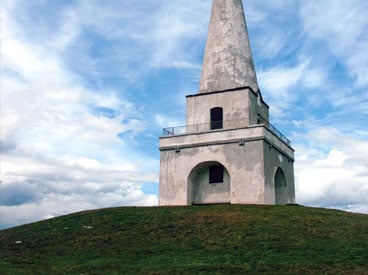
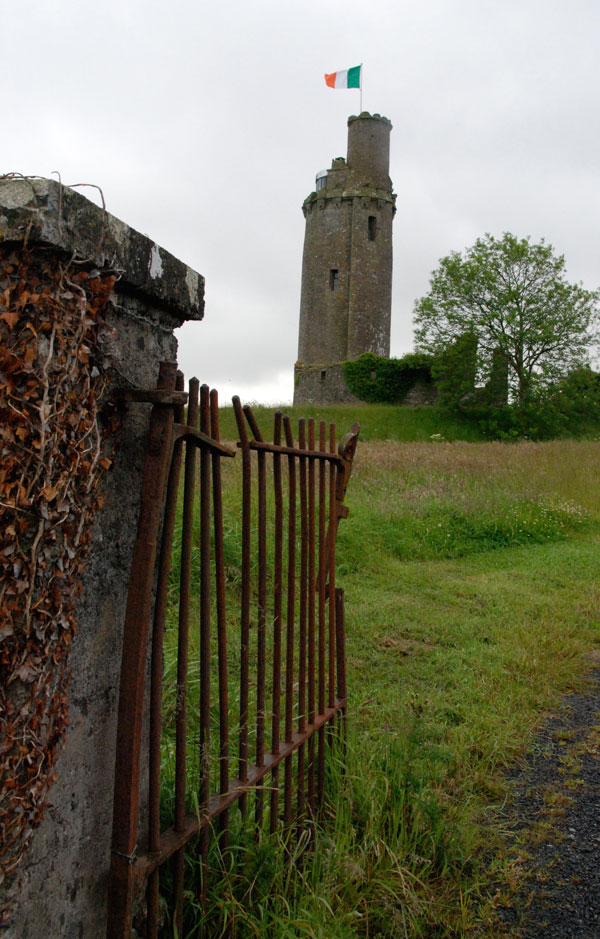
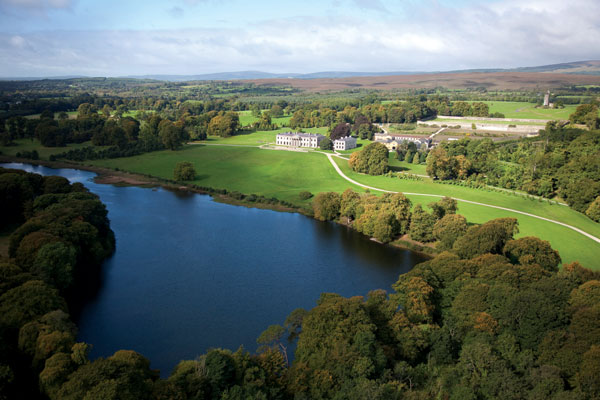
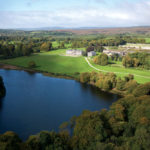


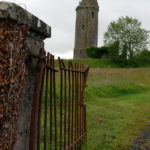
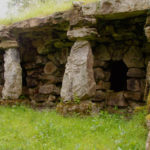
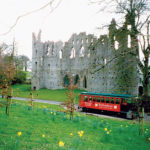

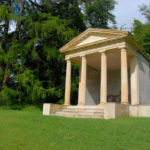


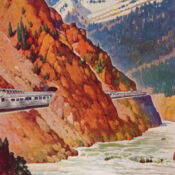

Comments
Two years ago, we were at the Orlando Airportdeparture gate, awaiting take-off for Ireland, my grandfather and grandmother’s birthplace. And then the volcano erupted again. Events have prevented us from rescheduling the trip, and I’m so glad. The article about Ireland’s Follies is wonderful and stirs the wanderlust. We are now researching – again- all the things we want to see in Ireland, and we have added the Follies to our must-see list. Thank you for making us aware of these; we can hardly wait to go.
LOVED your article on the Follies of Ireland. Just made me want to drop everything and go. Thanks for a Follie good time